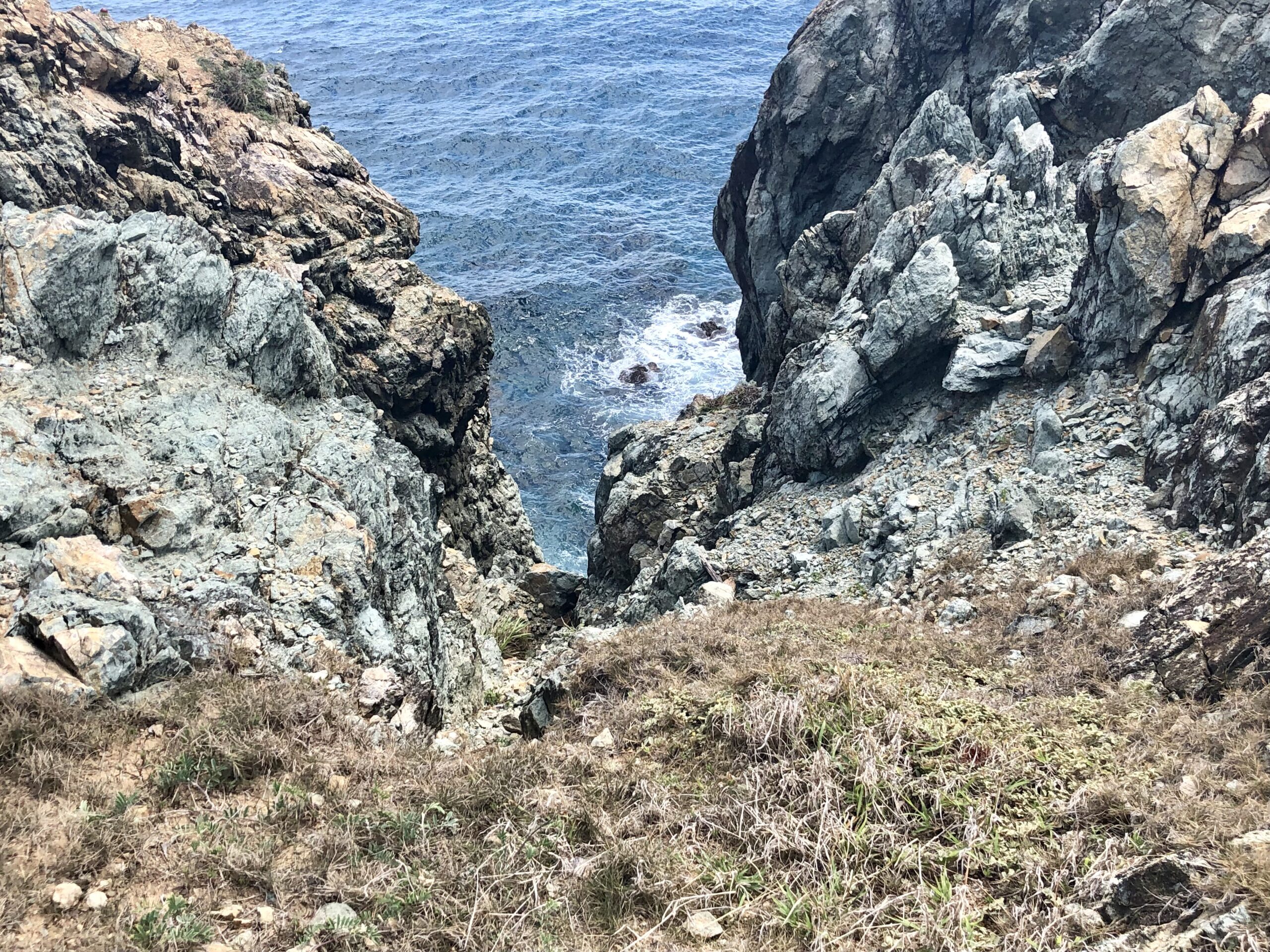
For close to 40 years, a group of local historians has sought details related to the 1733 slave rebellion in the Danish West Indies. On Sunday, on St. John, there was a ceremony to honor freedom fighters linked to an island captured by its slaves and held for six months.
Before a group of hikers, officials of the Virgin Islands National Park unveiled a historic marker at Ram Head on the island’s south shore. In a few short lines, a legend on the marker tells how slaves who captured the island from Danish soldiers met their fate when authorities of the day returned to take it back.
The event began near the entrance of Salt Pond Beach along Route 107. Speakers welcomed residents, public officials and a group of high school students before leading a trail hike to the place where a plaque would be unveiled.
Philosopher Hadiya Sewer began by asking the crowd to think about the way the stories of the rebellion are being told by who, and how.
“We said there were those individuals and revolutionaries camping at Ram Head, and they may have committed suicide there in order to avoid being taken in and captured. And then we have some community records that say they may have camped there but the suicides occurred elsewhere — maybe at Brown Bay or at Mary’s Point,” Sewer said.
The most important idea, she said, is to recognize and honor that moment in history.
Delegate to Congress Stacey Plaskett was among the greeters. As the sponsor of the resolution in Congress that called for placing a historical marker at Ram Head, the Delegate told the group why. “I think this is important because there is such a drive to wipe out history in this country right now, and without history our children can’t be strong,” Plaskett said.
The 20 or so Ivanna Eudora Kean High School students who joined the hike appeared eager for adventure. As the remarks wrapped up, those willing to make the hike headed down to Salt Pond Beach and the rocky coastline leading to the trail.

The group paused for a while, allowing stragglers to catch up. As she made her way to the trail heading uphill to Ram Head, Plaskett spoke about an April 2023 trip to Ghana.
House of Representatives Minority Leader Hakeem Jeffries led a delegation of lawmakers to the West African nation. One of the stops they made there was to some of the coastal structures known as slave castles.
“There are lots of castles that dot the coastline of Ghana, and in this particular one there was a plaque to the Akwamu who had lost a particular war, and it was just explaining that they were housed there before being sent to the Danish West Indies,” she said.
Virgin Islands National Park Interpreter Ahmad Toure led the way up the trail up to the peak. “One of the first things I was tasked to do when I came here was to fulfill the directives of the bill that was to have this plaque placed,” he said upon reaching Ram Head’s peak.
And with that, he unwrapped the panel mounted on a stand bearing the words Akwamu Insurrection: November 23, 1733. Toure read the inscription aloud: “In memory of the brave St. Johnian enslaved ancestors, who in 1733 organized the first major battles of resistance against the brutality of the European slave trade in the Americas …”
It went on to say that those who engaged in overthrowing Danish soldiers and holding St. John for six months fled to Ram Head as authorities returned and began to pursue them. To evade recapture, the plaque said, some “ritualistically took their own lives in April of 1734.”
A peek down the rocky cliffs lining the trail reveals steep drops to the coastline below, a convenient spot to end it all. But one of the historians who has worked to piece together the uprising narrative said that might account for some — but not all — of those who fled. Chenzira “Dr. Chen” Kahina, director of the Virgin Islands Caribbean Cultural Center, said there were other ways for the rebels to escape.
Kahina said she flew over from St. Croix early Sunday morning to witness the unveiling. As Sewer suggested in her earlier remarks, Dr. Chen said some of the rebels may have hidden in the surrounding areas. Others may have swam to neighboring cays. Kahina pointed to records kept by other European nations holding islands near the Danish West Indies to support those ideas.
She added that some archaeological work already done in the area may yield further clues about the last days of what the plaque now calls the Akwamu Insurrection.





